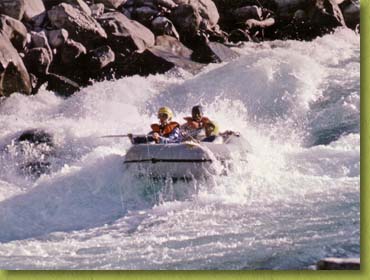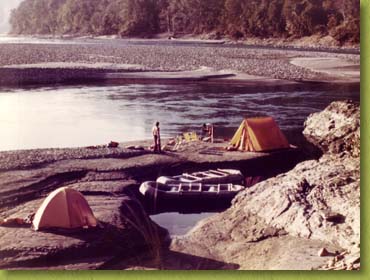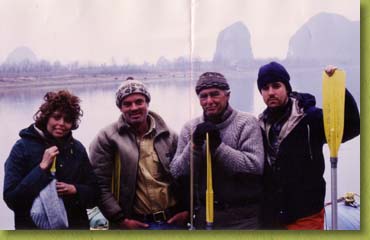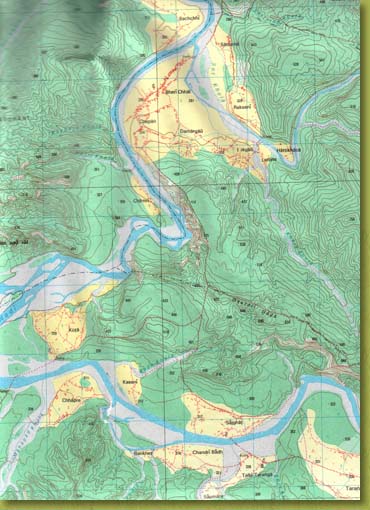 |
 |
|
 |
|
 |
|
 |
|
 |
|
 |
|
 |
|
 |
 |
||||||||||||||||||
|
In 1971 Peter Byrne led a small group of friends on a 300 mile trek from Pokhara, in Nepal's middle Himalaya, to the western border of the country. Part of the trek took him down some eighty miles of trails running alongside the beautiful Tula Beri River and the thought came to his mind... how marvelous it would be to raft this river, especially as no one had ever run it before? That winter he returned with half a dozen friends, successfully made the first descent of the Beri and the year after, seeing the potential for commercial river-running in Nepal, and needing funds to support the work of his society, the International Wildlife Conservation Society Inc., opened one of the first white-water, river-running companies in Nepal under the name of PETER BYRNE EXPEDITIONS.
Because of the need to stop and carefully scout potentially hazardous areas on unknown rivers, the first descent of the Tula Beri took eighteen days. Intrigued by the beauty of Nepal's Himalaya rivers Peter decided to have a look at some of the other great cataracts of the mountains and over the next few years he made the first descents of the Sarda, Nepal's extreme western river, in seventeen days; the Sapt Gandaki, a smooth-flowing jungle river of the Terai, in ten days; the mighty Karnali and its Terai drainage, the Girwa, to the Indian border, in thirty-two days; and half a dozen of the country's smaller rivers, including the western Rapti, the Chaundar and the Bauni. When he heard that no one had yet run a river in China, he set out with three others and a single raft and, without permission (the Chinese government simply would not give it) did the first descent of the upper section of the Li River, which, with its magnificent limestone "sugarloaf" formations, is one of the most beautiful rivers in China. He then turned his eyes to Africa and made the first descent of the Galana Sabaki, a crocodile and hippo-infested river that draws its water from the lower slopes of Kilimanjaro and runs its chocolate brown course east, through the wild country of the Tsavo Reserve, to the Indian Ocean. On a ten day trip his raft was attacked, bitten and punctured five times by big crocodiles. Each time repairs were carried out and the group went on, quickly learning that banging the paddles on the raft tubes deterred all but the most savage attacks. In 1980, after eight years of white-water adventure, Peter put away his paddles and returned to his jungle life though now, with big game hunting at an end, for commercial safaris based on wildlife observation and photography. Peter's fellow explorers on his great first descents included, for the Tula Beri, Monte Bricker, of Portland, Oregon and Celia Killeen, of Parkdale, Oregon. For the Li, Jack Mills of Parkdale, Oregon and Cynthia Fagan of New York. For the Galana Sabaki, Mills again with Phillip Cohen of Sydney, Australia. For the Sarda, Walker Inman of Jackson Hole, Wyoming, and Basanta Karki, of Katmandu. And for the western Rapti, his daughter Rara, Jangbu Sherpa of Katmandu and Bill and Beryl Green, of Touchen End, Berkshire, England. |
|
|||||||||||||||||
|
Website Designed and Hosted by D INTERNET Solutions |
||||||||||||||||||



